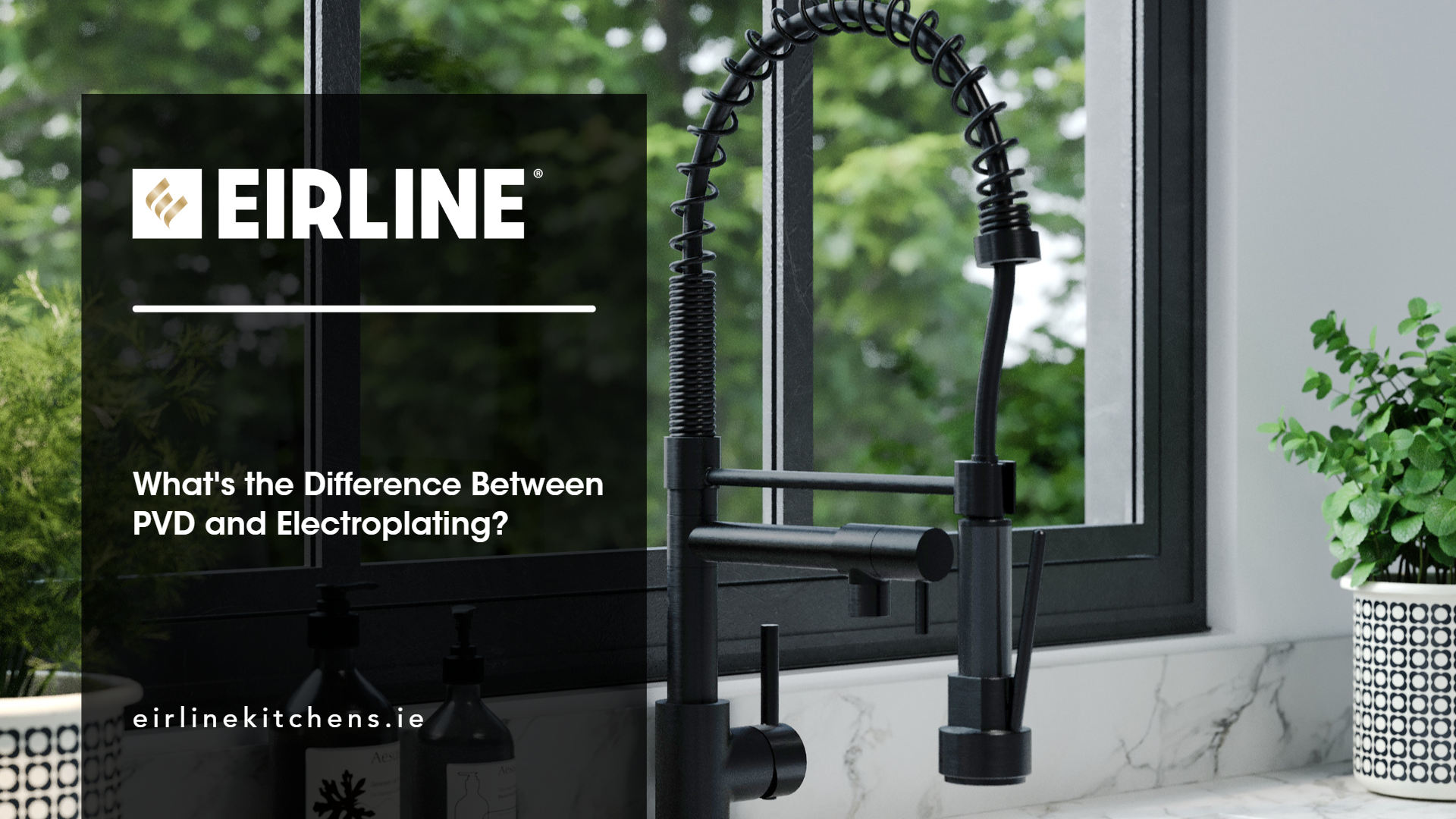What’s the Difference Between PVD and Electroplating?
Date 26th June 2023 /// Product News

The finish of a kitchen tap is often an overlooked part of the homeowner’s decision-making process. We get it. When searching for the perfect kitchen tap to seamlessly slot into your space, your key focus is on style, functionality, competitive warranty terms, and pricing.
The kitchen industry has evolved so much, particularly over the last decade or so, and now offers multiple variations of sinks and taps. There’s now something out there to suit everyone’s taste or needs, but many often turn a blind eye when it comes to the design finish of a kitchen sink or tap.
Not only is this something to consider as a homeowner, but also as a buyer, interior designer, architect or other industry professional. At the end of the day, the typical homeowner expects their kitchen faucet to last for years to come, and how a tap is coated plays a big part in its durability.
Different Types of Tap Finishes in the Eirline Range
There are many methods used within the industry to coat fittings, with Electroplating and Physical Vapour Deposition (PVD) being the most known. These are the two methods used when coating Eirline kitchen taps.
Both methods offer equal benefits, although, as the industry evolves so do the techniques used in the manufacturing and design stages.
What’s the Difference Between PVD and Electroplating?
Electroplating has been around since 1805, it involves plating a film of chromium, silver, or another metal onto a tap using electrical energy. The results leave a thin layer of metal deposited on the surface of the tap.
Once electroplated, a kitchen sink or tap becomes corrosion-resistant and anti-rust, making it more durable and able to withstand the test of time in a family home.
While electroplating is one of the most commonly used coating methods, processes such as Physical Vapour Deposition have emerged in recent years.
Physical Vapour Deposition, or better known within the industry as PVD, is an innovative method of finishing a sink or tap. Completing the PVD process includes vaporising a solid material in a vacuum and depositing it onto the surface of a sink or tap. When the coating builds up, it actually bonds to the tap substrate rather than just sitting on top of it.
As a result, PVD helps achieve a more uniform, hard-wearing and chip-resistant deposit whilst also offering a wider range of materials to use for coating. This allows for more colour finishes of the end product, which is essential when considering the latest kitchen trends. Just like Electroplating, PVD offers wear resistance and anti-rust qualities, but also has additional benefits such as scratch resistance, cleaner surface material, and it’s a safer process.
Nobody has the time, energy, or funds to be purchasing a new kitchen sink or tap every second year, which is why it’s so important to weigh up all the factors, (including the finish) when buying a new kitchen sink or tap.
It’s important to us that our customers really understand what they’re getting when purchasing an Eirline kitchen sink or tap. Attention to detail and use of the latest technologies ensure that each product is beautiful and highly functional.
Our commitment to quality ensures that each product is made to the highest standards. To ensure our customers have the same confidence in Eirline products as we do, we offer a 5-year warranty on our new range of kitchen taps and have an in-house after-sales team here to help with any technical-related queries.
To find out how each of our sinks and taps are finished, get in touch with our team here.


